What Style of Art Is Use of Materials 3d
3D art: 34 incredible examples to inspire you
Creating 3D art takes a neat deal of skill, only if you lot're willing to put in the endeavor and then you lot tin achieve stunning results. Working in 3D adds a level of depth and realism that's extremely difficult to capture when working in 2nd, and if you are just starting out in 3D, you can use these pieces of 3D art every bit inspiration to propel you forrad. Likewise equally presenting the beautiful images, we've also spoken to the artists to hear a lilliputian virtually their workflow and pattern process.
In that location is a huge range of tools out at that place to utilise in your 3D art process, as our guide to the all-time 3D modelling software proves. This list includes a range of free software, platonic if you're simply getting started.
Click the icon in the tiptop right of each prototype to run into it full-size.
01. Robery DeNiro, Casino
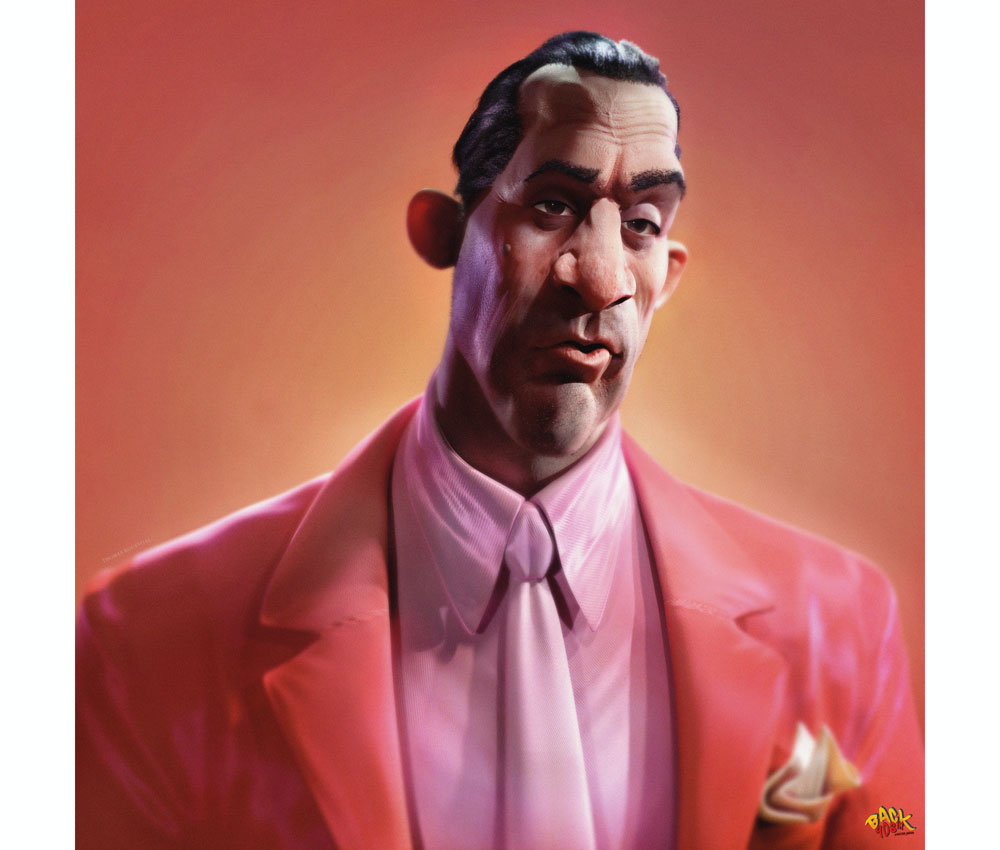
Grapheme artist Thomas Rousvoal created this stylish fan art of Robert De Niro equally function of his 'Back in '90s' series. An important aspect in the design was to give De Niro "his particular personality and legendary facial expression, balancing the reality and respecting my cartoon stylisations," Rousvoal explains.
Rousvoal paid shut attention to applying racket and grain to the epitome for this 3D art, evoking the atmosphere of Martin Scorsese's Casino. "I like to requite life to my works, add defects to them. The human eye is full of imperfection, photo and picture palace lenses imitate our vision. I endeavour to get as close as possible to this," Rousvoal explains. "I take my own anamorphic lens photographic camera setup."
Rousvoal has also developed a way of working that consists of building the body of a graphic symbol that already has details, thanks to real 8K scanner skin maps that he projects onto UVs in Mari. He adds: "All the characters I start are from the same body, and even UV. This allows me to starting time a new sculpture with unlike shapes while having my layers of realistic skin details."
02. Olakunde
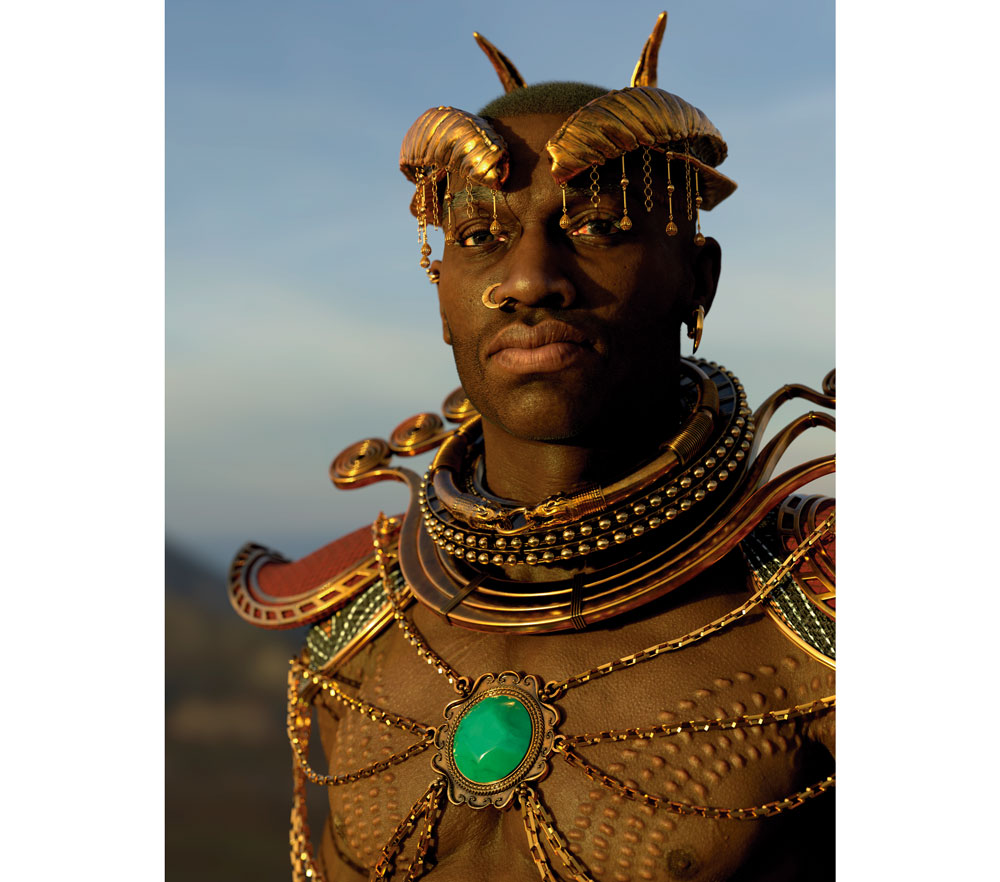
Olakunde, which translates as 'the brave arrived', took Brazil-based 3D character artist Jack Malone two months to consummate. He worked on the incredibly detailed grapheme in between cinematic and video game projects for a range of companies. Malone immerses himself deeply into each project, e'er aiming for more than just a simple 3D model. "My commitment is to add dissimilar art aspects to my piece of work, like composition, pattern and art direction," he explains.
The near challenging aspect of Malone's process was discovering and defining the African style, "information technology was rewarding when I finally got the correct pattern," he adds. After assembling a ton of references, Malone fabricated a raw sculpture to better understand the anatomical proportions of the grapheme and design of the assets. He utilises equally many UDIMs equally possible to achieve a corking UV texture resolution.
Subsequently this, Malone starts work on the trunk texture in Zbrush using Hd Geometry along with the asset textures in Substance Painter. Marvelous Designer was employed to create and simulate the graphic symbol'south brim, also every bit the textile belt tied around his waist. In the terminal stage, everything was assembled in Maya and rendered using Arnold.
03. Sunshine Bloc
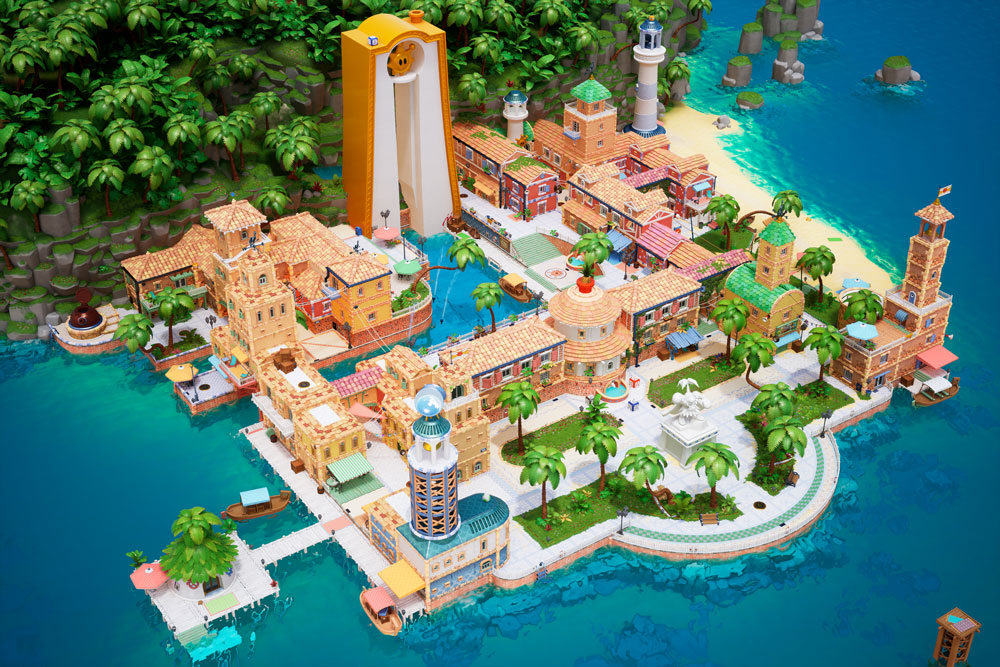
Vincent Moubeche has been creating 3D art for the past decade and currently works every bit an surroundings creative person for Coercion Games in Montreal, Canada. He's been working on this fun Super Mario fan art for two months, taking a break in December. "The scene is not technically impressive," Moubeche admits, "I did what I know best: modelling and level art. The only unusual thing I did is rework all the metrics from the original Plaza to fit the more than compacted idea I had of the surface area."
So many buildings were needed for the scene that, rather than making each one unique, Moubeche used kits. He then utilised placeholders with minimal details to plot the scene in 3ds Max . From there he'll make high-poly versions of the avails with 3ds Max or ZBrush. Playing with camera angles and focal lengths immune Moubeche to accomplish happy accidents such every bit tilt shifts. For this 3D art project, Moubeche also employed Substance Painter's Slope Mistiness for the first time: "I added a pattern with the Slope Mistiness to break the shape," he explains, "it brought something interesting into the scene, even if it is subtle sometimes."
04. Y-Wing redesign 2020
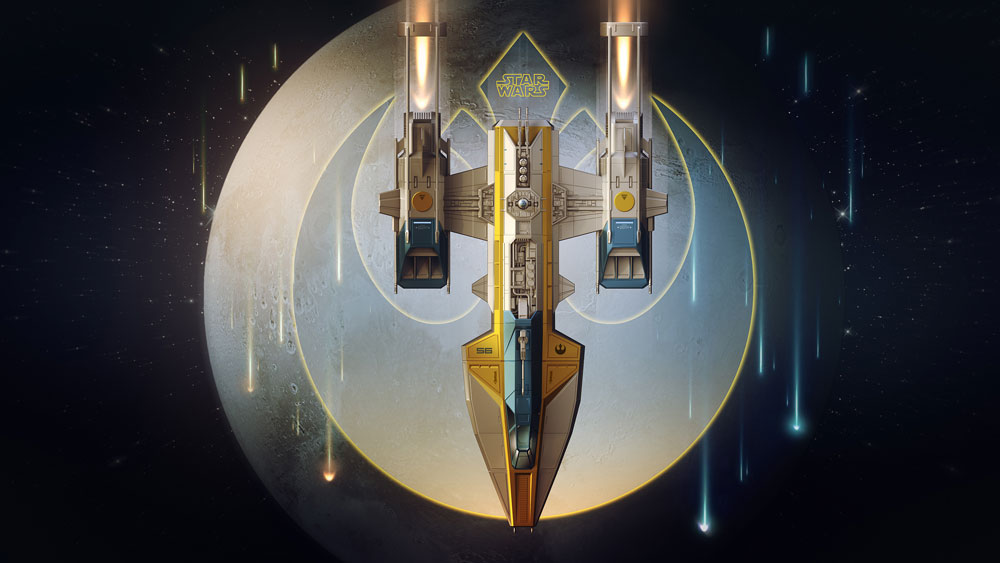
Piece of work on the intricate 3D model of this Y-wing design took Ubisoft senior 3D environs artist, Encho Enchev, simply three days to complete. Enchev congenital the model in 3ds Max, earlier rendering in V-Ray and applying finishing touches in Photoshop.
In his mean solar day task at Ubisoft Enchev will begin projects by making rough sketches to present his ideas to the art director. Next he creates a low-poly 3D model to figure out the right proportions and composition for the piece, continuing with the details once he's satisfied. "If I'one thousand making an in-game model for Ubisoft I unwrap the model and start texturing and baking in Substance Painter," he explains, "if I'1000 doing a design for me I will skip the UVs and simply exercise a paintover after I'yard washed with the renders."
Enchev adds that his inspiration comes from seeing a piece of work of art evolve from initial sketch to a real 3D model in a movie or game.
05. J.R.R Tolkien
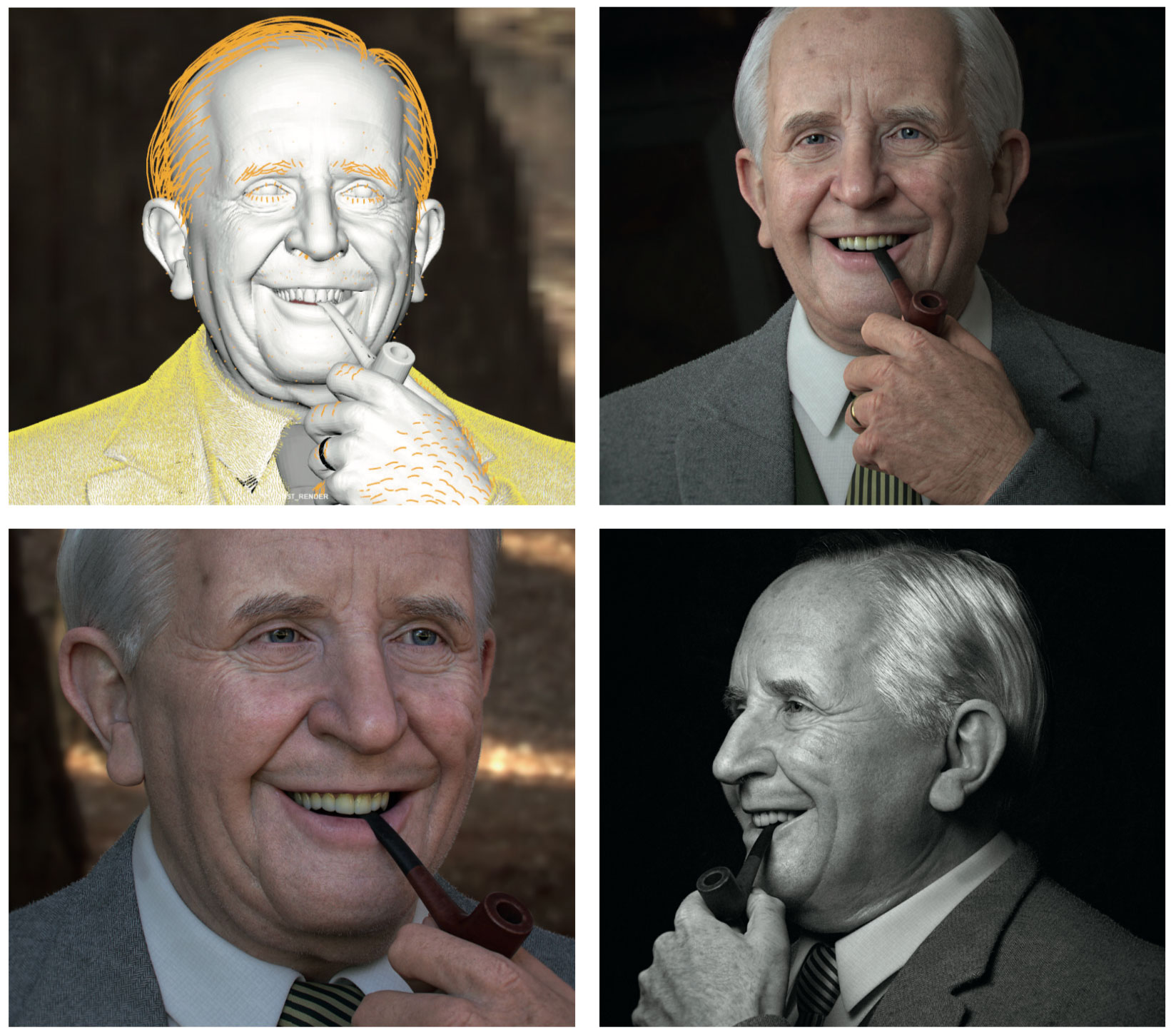
Information technology took character artist Roger Magrini three months to consummate work on this lifelike recreation of The Lord Of The Rings author J. R. R. Tolkien. "Everything was hand-sculpted and Polypainted in ZBrush on HD Geometry," Magrini explains, "except for his pipe, I used Substance for that."
Magrini began by gathering as much reference as possible, all with different angles and lighting setups. "Likeness is like a puzzle," he adds, "so y'all need reference to fill in the gaps." Magrini sculpted the likeness in ZBrush, before adding skin details past mitt, using brushes he created. "Then I Polypaint the Albedo, Specular and Bump maps," he continues.
Magrini challenged himself to achieve photorealism from the very first render of this 3D art, without whatsoever post- processing. "I also similar to do a stress test in unlike lighting setups," he adds, "to encounter if things agree up."
06. Ember
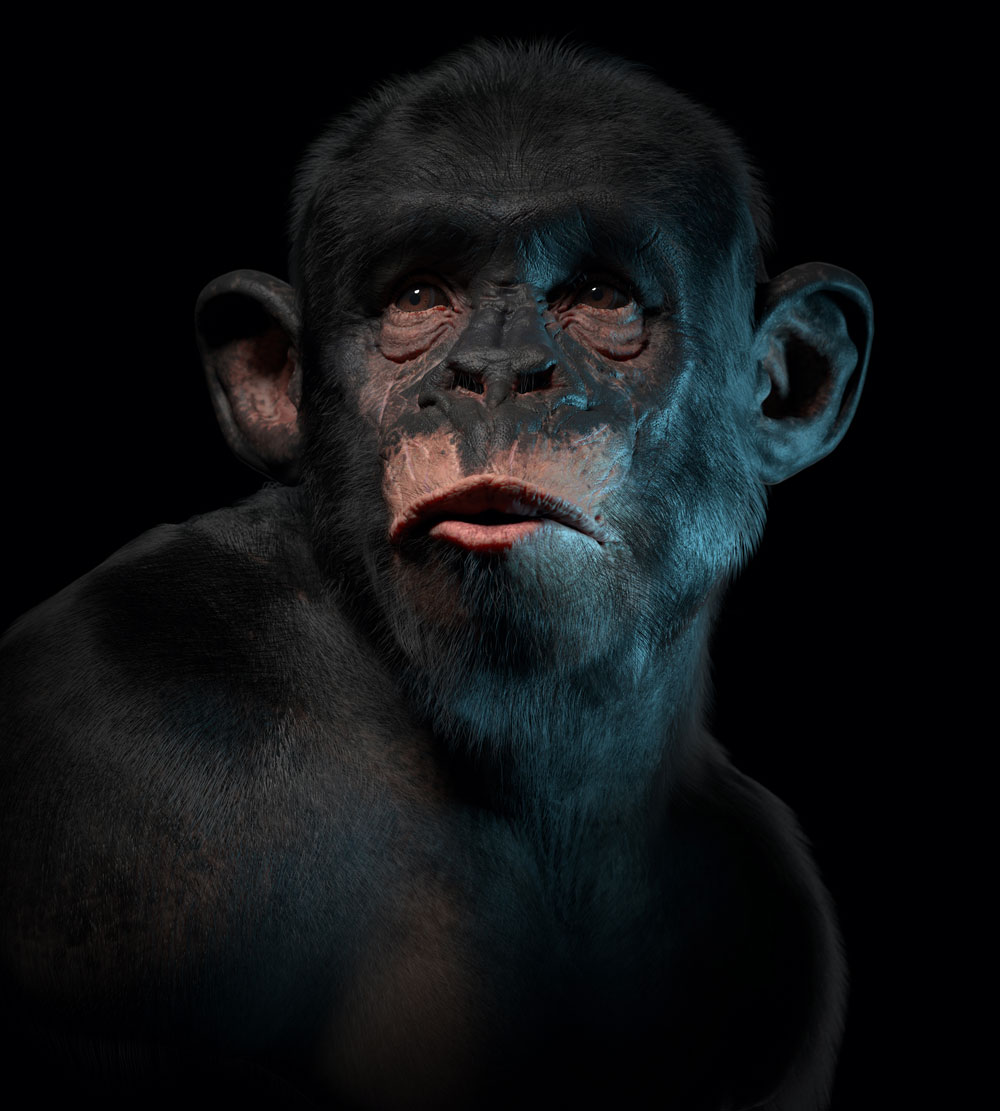
Grapheme artist Sina Pahlevani worked on this image every twenty-four hour period later on work, completing information technology in around ten days. Rather than undertaking extensive planning, Pahlevani likes to develop his artwork throughout the process. "Most of the time I don't accept a clear prototype in my mind, I just define the main story of my artwork. I might alter things a lot during the procedure."
First, Pahlevani blocks out the character's shape and silhouette in ZBrush. The 2nd phase is adding further detail and enhancing the shape of the character, before it undergoes retopology, UV and texturing. "I practice retopology and UV in Maya," Pahlevani explains. "For the texturing part you might use Mari, Substance Painter, or ZBrush Polypaint." The final stage of the pipeline involves setting up the shaders and lighting the scene, before making early test renders in Arnold. "After you go the starting time outcome you demand to become back and forth to modify your model," Pahlevani continues, "using textures and shaders to accomplish your desired consequence."
07. Ramen
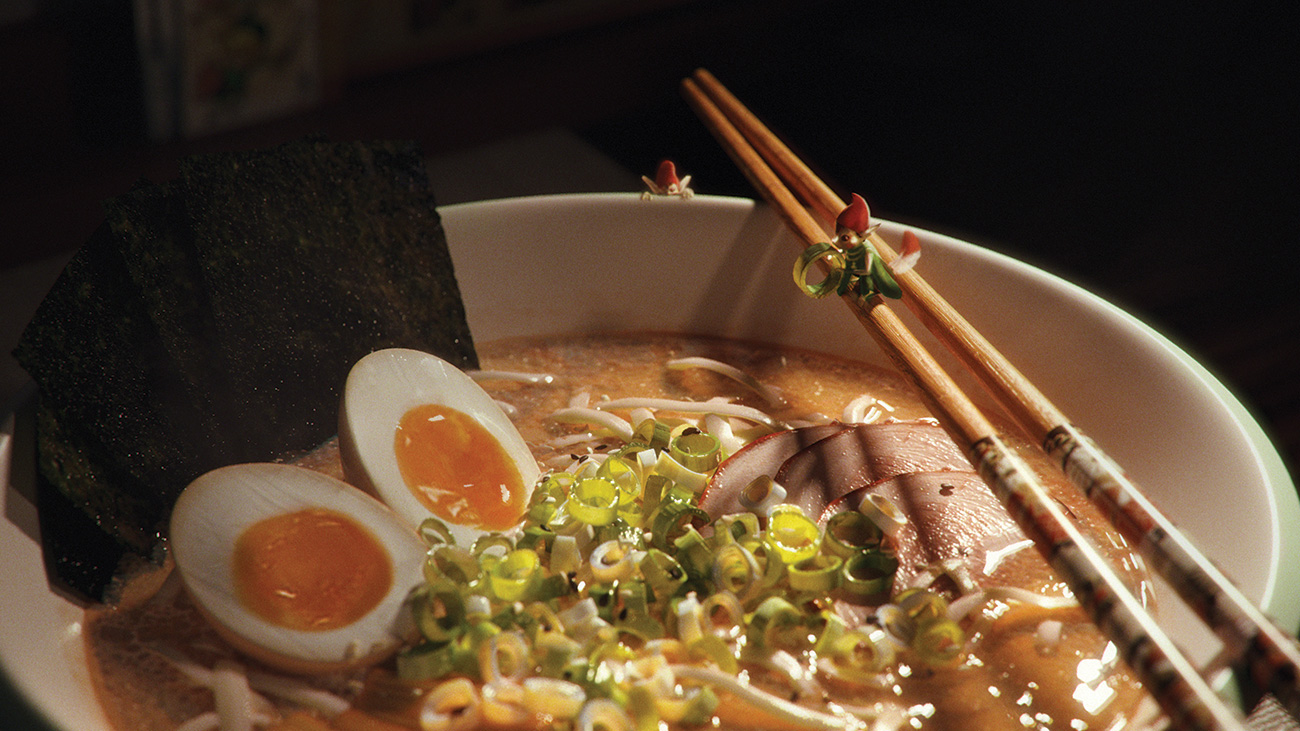
This appetising image provided 3D pupil Laura Keuk with an opportunity to use shading and lighting to create a dreamy and peaceful atmosphere. She used Blender's fabric simulation for the noodles, doing one noodle and then duplicating it, earlier simulating them merely similar wearable.
"I used deportation for the oil," she continues. "I spread the onion springs using a particle simulation with three unlike instanced meshes and shaders. I played with the scale and rotation to add together more randomness to the elements."
Keuk is inspired to create images like this by the ins and outs of daily life: "I love to sentry all the simple things surrounding me and understand what makes it beautiful. It tin can just exist a leafage on the basis, the way blossom petals are arranged, the way calorie-free bounces off a piece of sugar, or just a cat walking."
Food is a symbol of sharing, gathering and happiness in Keuk'southward family, and she wanted to portray this in her Ramen paradigm. Equally Keuk puts information technology: "The feeling I had when I was younger, the feelings food gave me, and a bit of a magical sensation, where the spectator could see that beauty can exist from each thing surrounding us."
08. The Golden Skull
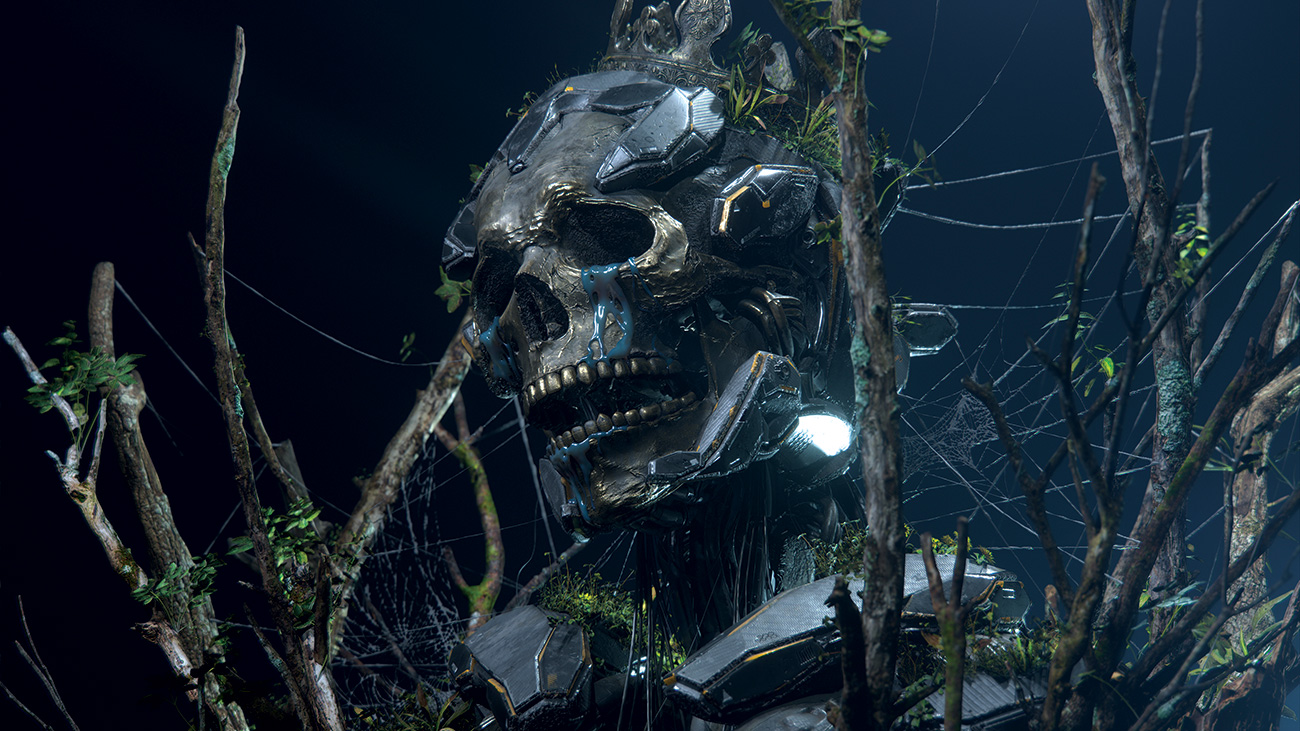
To create this haunting prototype, CG director, art managing director and environment artist Hirokazu Yokohara used a variety of notable techniques. MECH/FY - Procedural hard surfaces for Blender ii.eight were used to assist create the effectively details of the mech. "In addition, I tried using the real-time renderer EEVEE experimentally," adds Yokohara. The grass was made using Blender add together-on Graswald.
The 3D art epitome took almost five days to complete and provided Yokohara with an opportunity to learn and experiment inside Blender. He continues: "Cheers to real-time renderer EEVEE, I was able to finish the work quickly because I could go on with modelling, layout and lighting while watching the final quality prototype."
Yokohara's main tool is Cinema 4D (see here for some swell Movie house 4D tutorials), which he finds intuitive and easy to apply. "Since I am a CG generalist," he adds, "I written report various tools and workflows daily and endeavor to output them as art."
Previously Yokohara has worked on various CG projects related to movies, from photorealistic characters to more than stylised characters and environmental design. "All these things inspire me," he continues, "from artwork to everyday trivial events. The latest technology is likewise a huge source of inspiration."
09. God Pan
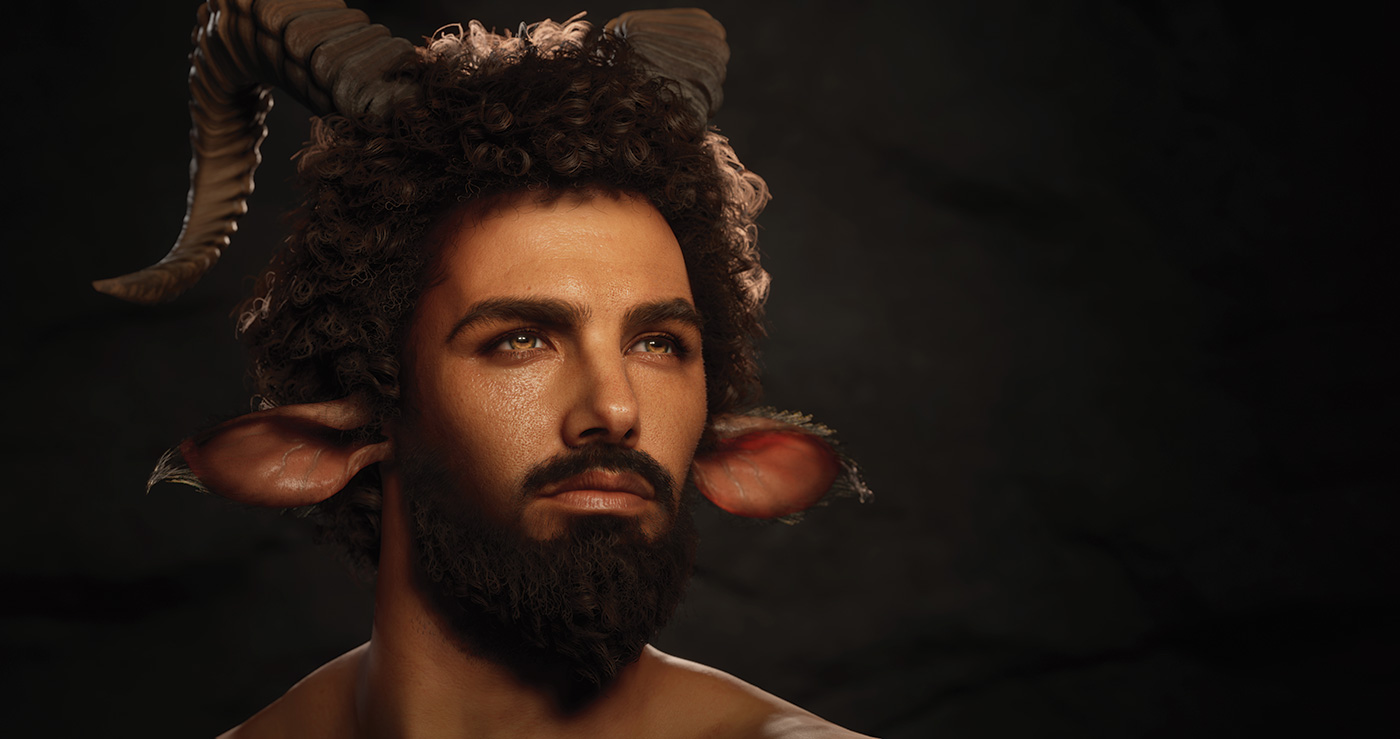
The biggest challenge that professional 3D artist Baolong Zhang faced on this project was creating the character's photorealistic hair. "He's got very curly hair that required a lot of attention," explains Zhang. "I used ZBrush FiberMesh to create the main volume of hair, so the smaller hairs were hand-placed. The shorter facial furs were created with XGen in Maya."
Throughout the project Zhang was inspired by the photography of Cristian Baitg Schreiweis, and he particularly enjoyed searching for further references. "I started searching for more references like Greek statues and paintings," he says. "It's fun to put these together in 3D, especially with Unreal Engine 4." Elsewhere he finds inspiration in nature and classic art.
Finding an interesting field of study is crucial to getting a adept start on a projection, according to Zhang: "I try to have a good idea of what it's going to look like. Every bit I'k not a concept artist, I don't really have a final concept, but I have a lot of reference to follow."
x. Game Buildings
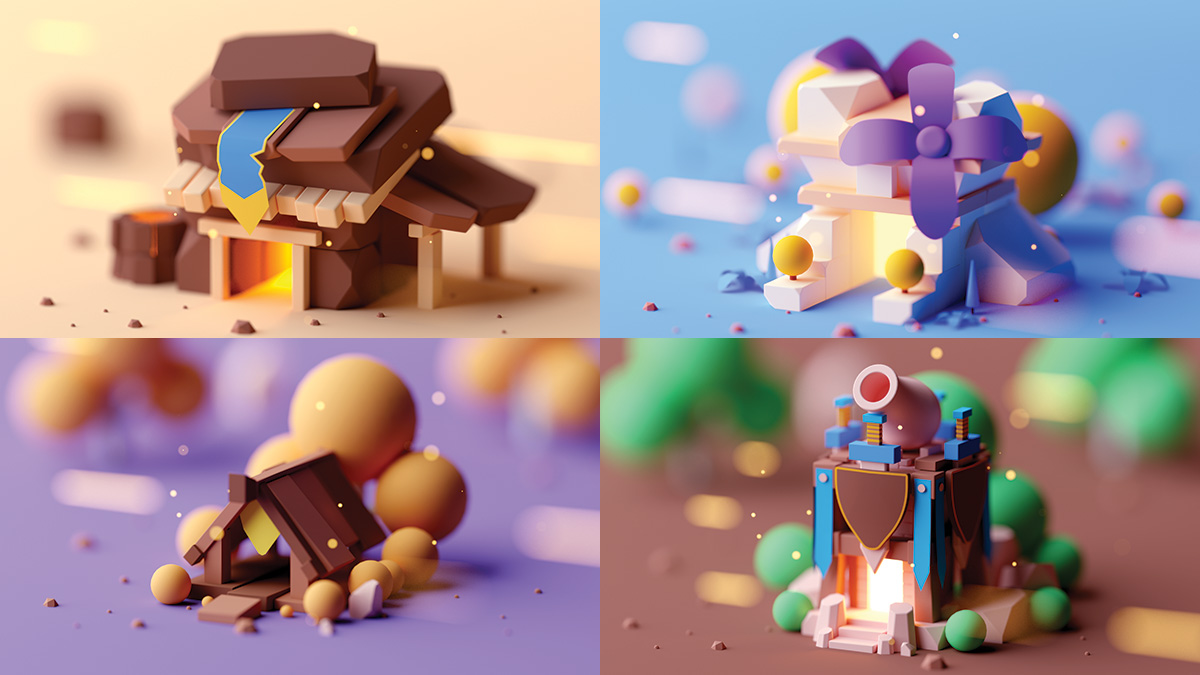
This 3D art project from art manager and movement designer Gustavo Henrique is a simple yet constructive 3D design. "All constructions were modelled in a very elementary way," Henrique explains. "Most of my designs are unproblematic merely full of details," he continues. "I e'er attempt to work with geometric shapes and virtually of my models are made from a cube. I use the Bevel tool to leave the edges of the objects rounded and create the feeling that it'south something fluffy."
After modelling the scene, Henrique gets to work on the render settings using Octane Return. "The first footstep is to piece of work on the camera settings. I get a bit of perspective using a 150mm focal length. I also increase the aperture of the lens to attain a mistiness and give it the feel of a miniature."
Henrique gets inspiration from the feedback he receives from fellow artists:
"What inspires me virtually is to come across people say that they are inspired by my projects. The feeling is incredible and the desire to keep on inspiring other people only increases. I believe recognition is very valuable to artists."
11. Seahorse in the corals
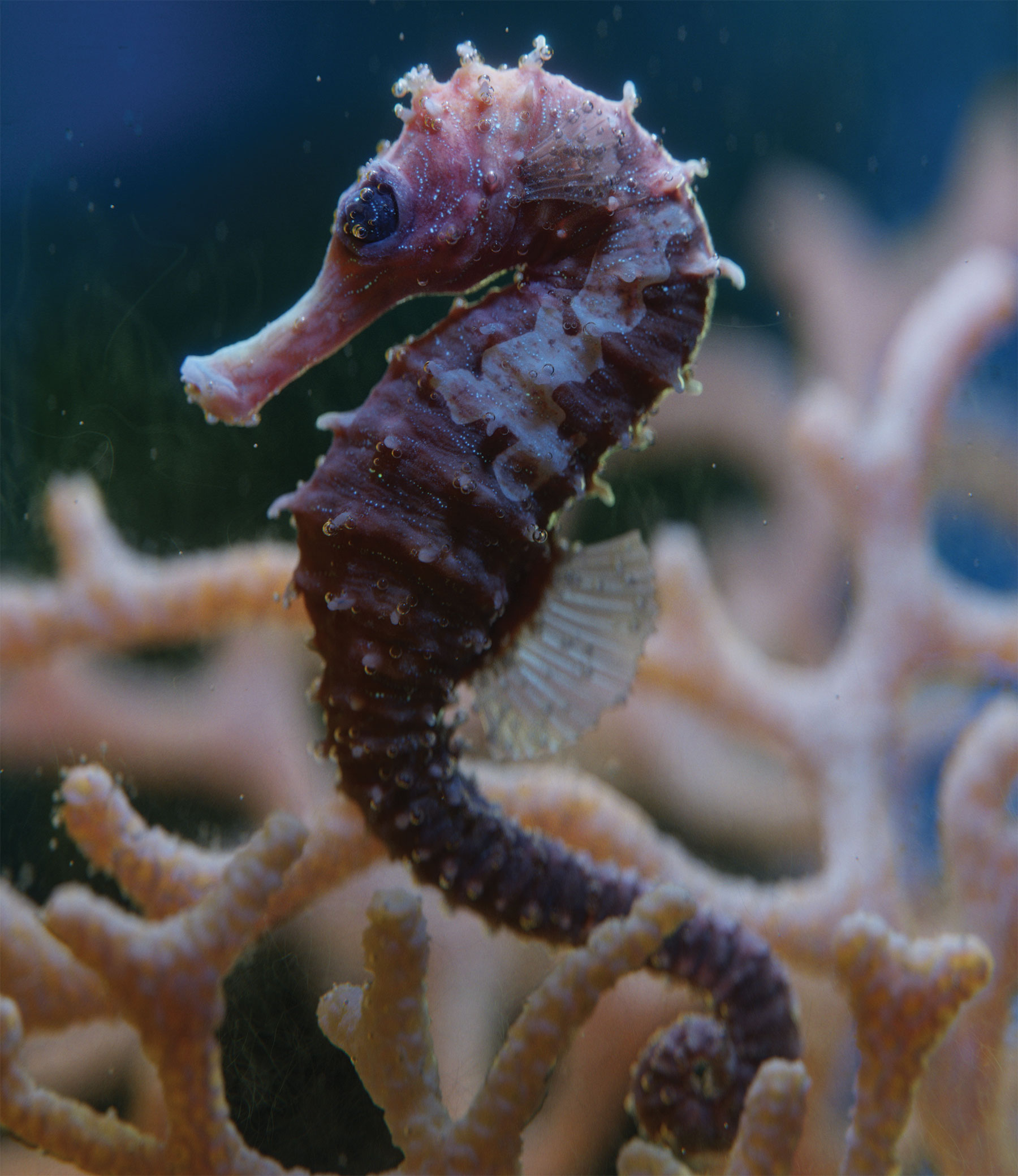
This breathtakingly realistic image took CG generalist Nika Maisuradze just 1 calendar week to consummate. "I always wanted to piece of work on an underwater scene," explains Maisuradze. "I was surprised to discover that creating a realistic underwater creature, which always seemed like such a claiming before, could be done with such ease and joy."
The 3D art project, withal, was not without its challenges as Maisuradze explains: "From a technical standpoint the biggest challenge was the shading. Instead of painting all my textures, I just painted the master aspects of textures I would demand: the primary base of operations color, small horizontal details, masks of each part of the horse, nose, body, tail, and these tiny bluish dots. Instead of repainting textures, I only adjusted them with these detail textures in the shading procedure, on the fly. For these kind of projects this workflow is much more robust."
12. Dear Fabricio
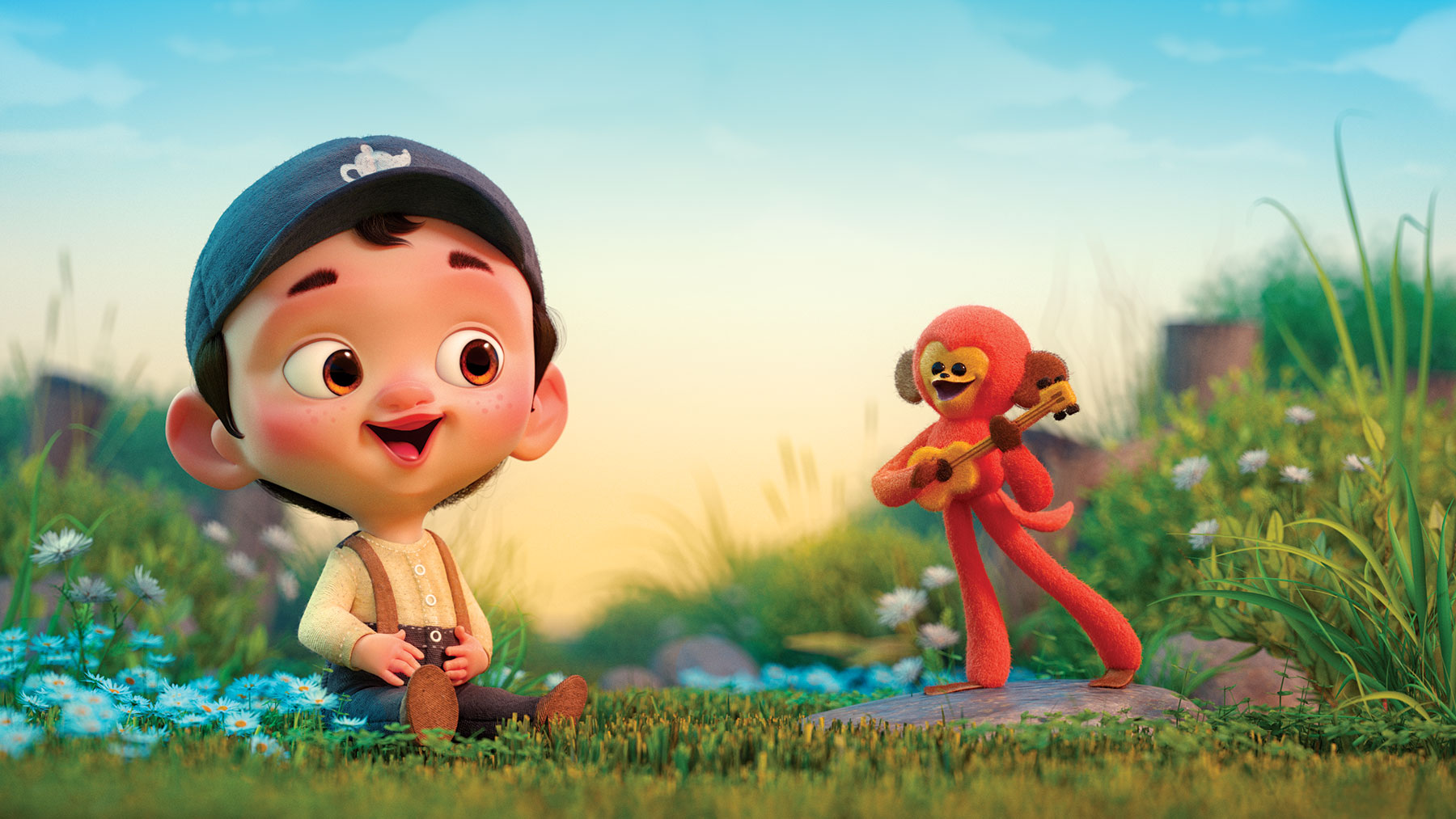
"Information technology took me effectually three and a half days to create the whole slice from concept to last product," says freelance director, CG supervisor and 3D artist Pedro Conti. This endearing image was a gift for his wife when she was meaning with their son. The sculptures were based on their ultrasound photos and a little plush monkey from Conti'due south babyhood.
Conti has thirteen years of industry feel to describe from on personal projects similar this: "I ran a visitor called Techno Paradigm for seven years," he reveals. More recently he has worked on Disney'southward Moana and currently freelances for companies similar Dreamworks, Universal Studios and Aardman.
"I spent more time thinking about colours, layout and composition than on fancy 3D techniques with this epitome," explains Conti. "I felt I should go back to the principles of design and learn more about traditional techniques such every bit photography, pattern and Gestalt Theory. If you understand those aspects of art you lot will discover a way to make it work in 3D."
13. There's a Pulse!
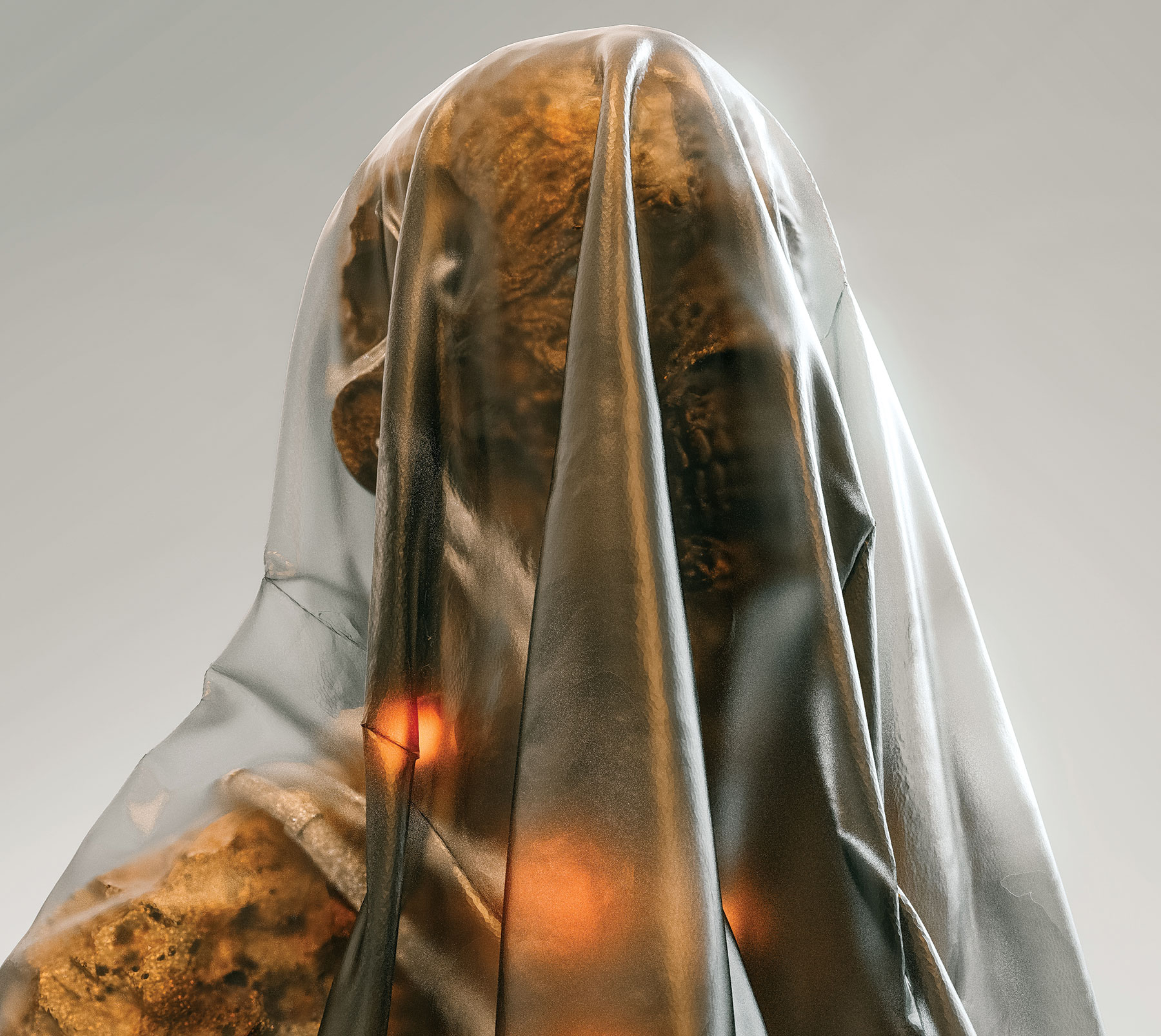
"I like experimenting in ZBrush," says concept creative person and comic book colourist Neeraj Menon. "Marvellous designer is something new I'g playing with. I do a lot of digital painting so both software come up in handy for initial ideas."
"Although the majority of my time was taken up sculpting the underlying model, I call up the about significant part was creating the textile in Marvellous Designer," he explains. "The actual design is simple, it'due south simply a sheet of cloth. The real challenge was to lay it just right, hiding certain parts and showing others."
Despite being a claiming at times, Menon maintains that this 3D art feel was an enjoyable one. He concludes: "The virtually fun part came during the materials and rendering phase. Once the translucency of the textile was applied, what I had seen in my mind actually became a reality. Everything fell into identify."
xiv. On the Road to Nowhere
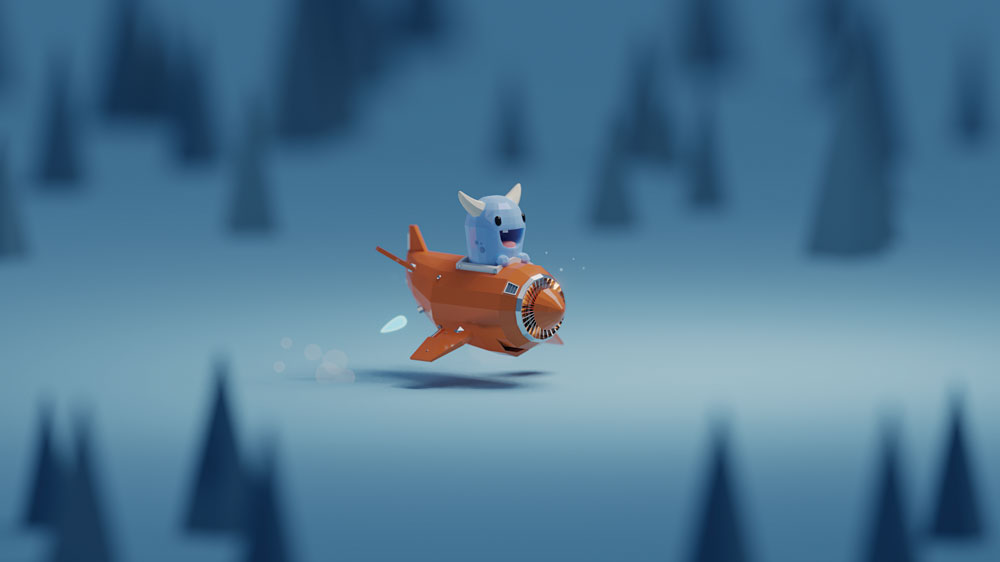
This insanely ambrosial little alien monster pilot was created by Mohamed Chahin in Blender, earlier rendering in Cycles. Chahin says that when information technology comes to 3D art, he'south nearly inspired by stories.
"Every bit artists information technology's our task to tell these stories in a more visual manner," he says. "Subsequently all, all artists are storytellers." It'southward certainly fun to imagine just what this lovable little critter could be getting up to as he flies around in his orange aircraft.
xv. The Forest
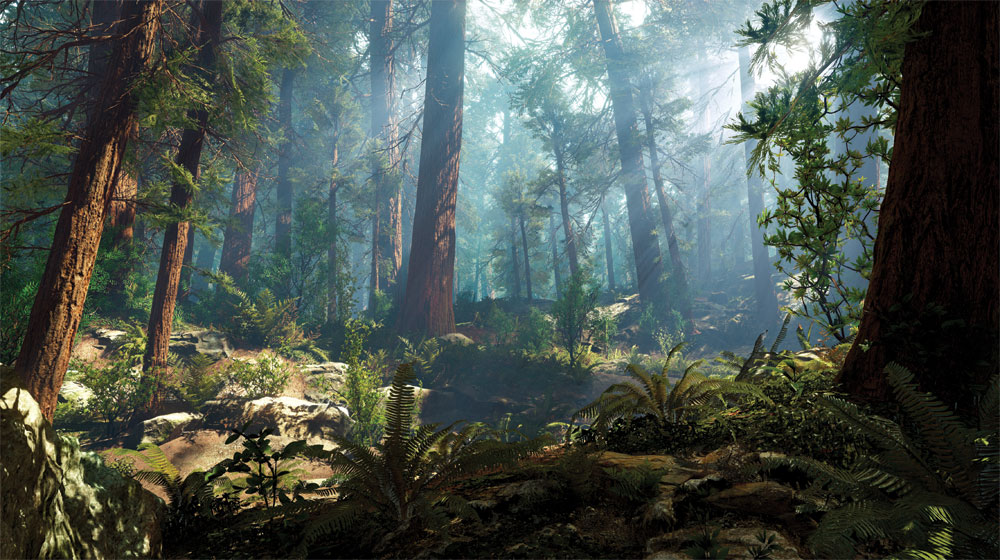
When lighting artist Joannie Leblanc created this cute 3D art woodland scene, she knew just how important it was to utilise lighting effectively to produce the mood she desired.
"Lighting is not just well-nigh light and shadows," she explains. "Y'all need to think nearly what people will focus on in your fine art to grasp their attention. Contrast, depth, colours and rhythm will help the optics travel in your movie like a flow, letting the viewers immerse themselves into your world."
16. Somerset Isle
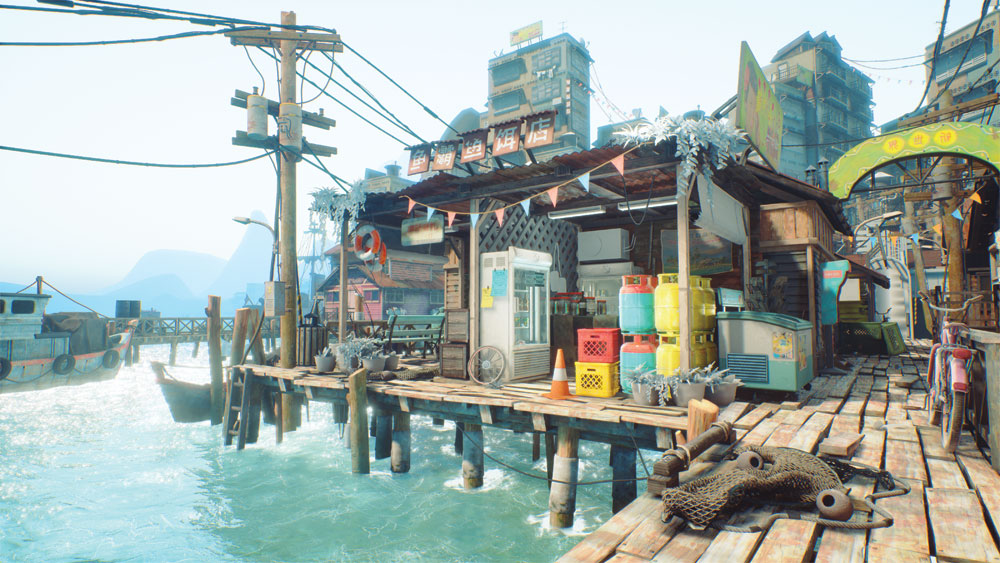
Somerset Isle is a existent-time environment rendered with Unreal Engine. "The limerick and lookdev is heavily based on the astonishing concept works from Chong FeiGiap (Running Snail Studio)," explains environment artist Tomer Meltser of his paradigm, "while many of the design and construction ideas in the environment (boats, architecture) are based on images of Chew Jetty (Malaysia) and other waterfront towns of this nature."
17. Aghori Portrait
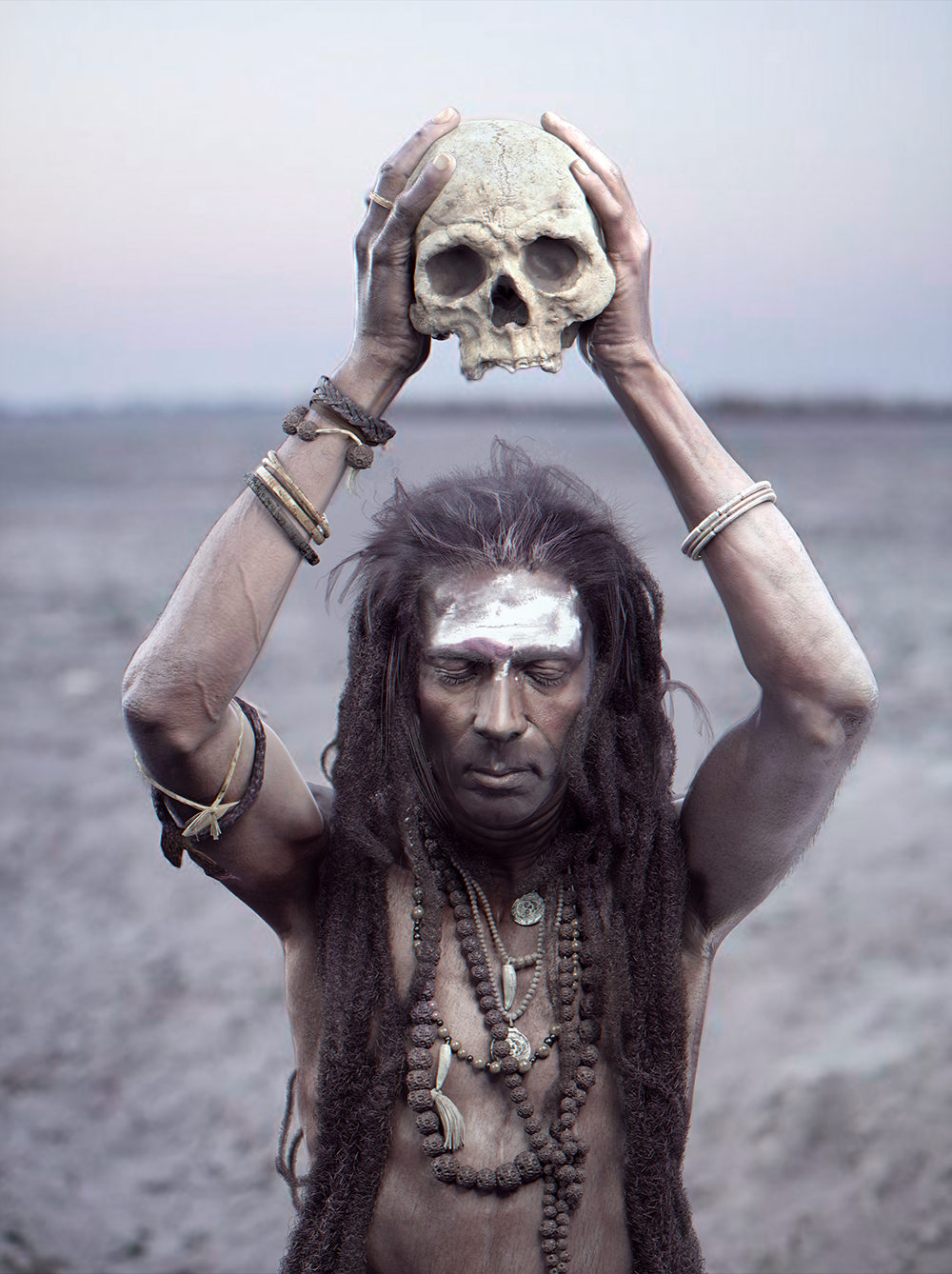
Information technology's hard to believe that Aldo Martínez Calzadilla'southward 3D fine art, Aghori Portrait, created using ZBrush, Maya and Mari, but took two weeks to finish. "I try to piece of work as fast as possible," he explains. "In my experience, moments of inspiration don't final likewise long, so I try to go through the process of creating an paradigm as efficiently as I can."
The meticulous background of modelling and sculpting was his favourite office of the 3D art project. "I knew that in order to practice a practiced chore with the Aghori, the forms and anatomy had to be good and authentic to the reference," he reveals.
xviii. PKTS_09
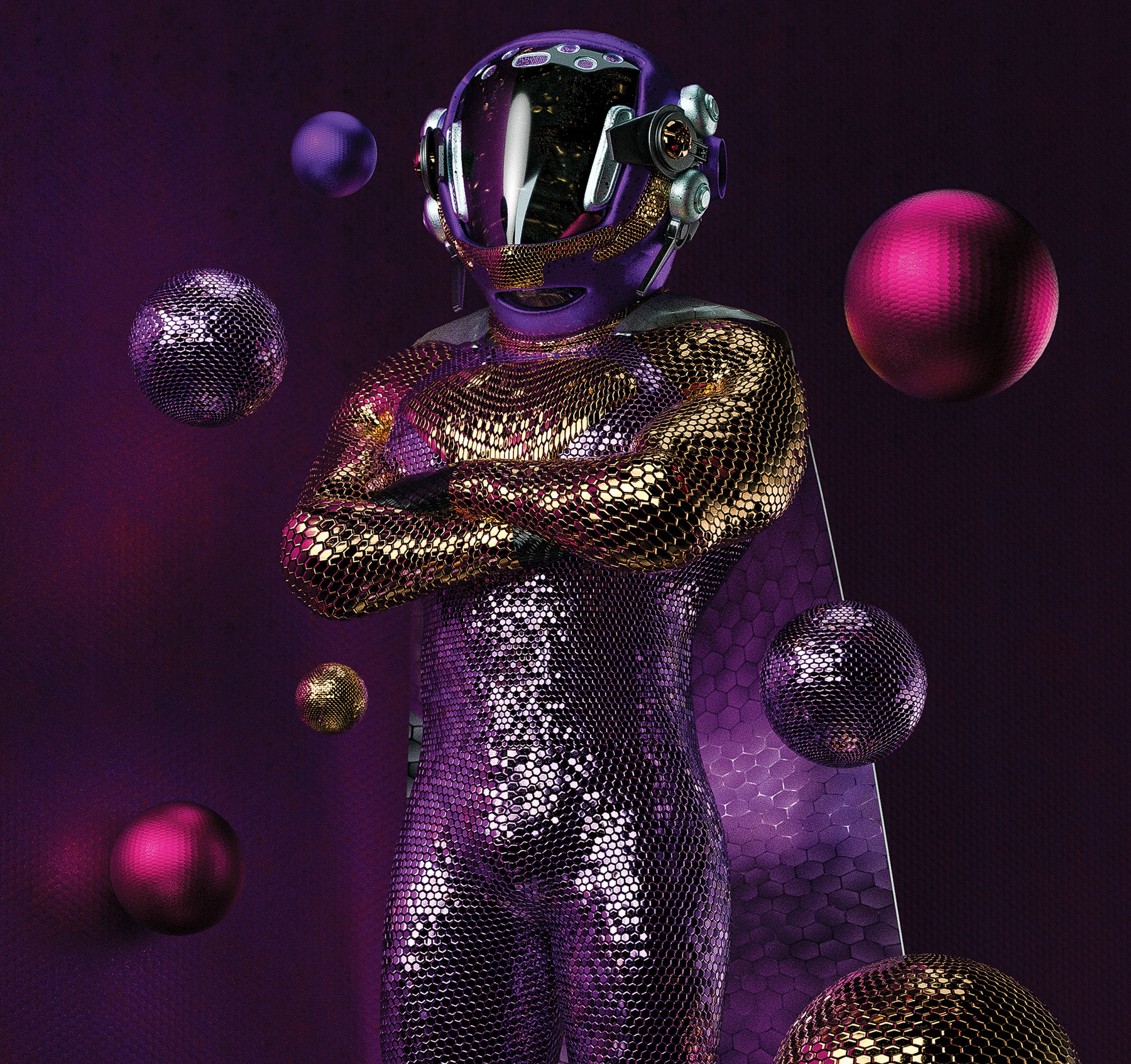
PKTS is an abstract, sci-fi and gimmicky 3D art series from freelance art director, concept and 3D artist Eugene Golovanchuk, also known as Skeeva. Personal projects similar this e'er evolve out of the smallest and simplest of experiments.
"Combine simple shapes and colours and see if you have that inner sense of what you are going to see. If information technology works then yous tin develop the idea into something more fully formed. Movie house 4D is my main 3D software. I unremarkably employ the viewport as an empty canvas, combining unlike silhouettes and textures into one composition to see how objects 'experience' inside the scene," he explains.
When it comes to achieving the slick and fashionable look of his work, Golovanchuk has some simple communication: "The trick is to try and fix textures and lighting first, and then it looks more or less like the final render. And so you can acquit on tweaking the model and textures. Most people will say it's incorrect and that the procedure should be step-by-step. You know what? Don't heed to anyone else, only do what you experience."
19. Slug Race
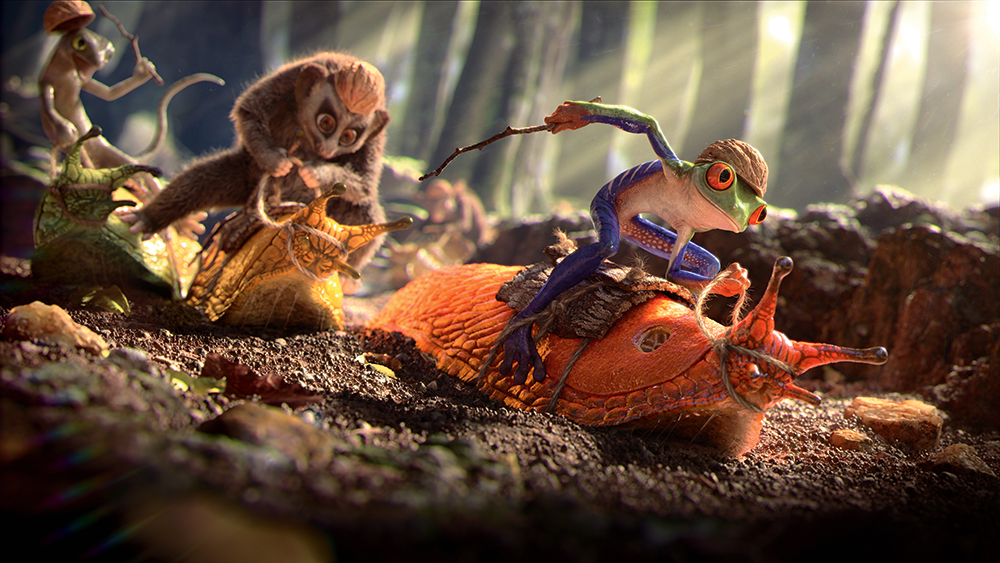
It may be a whimsical 3D art scene, just Slug Race is closely based in reality. Brazilian 3D artist Fabricio Moraes and his collaborator Guilherme Formenti used Agisoft PhotoScan to generate 3D spatial information from digital photos.
"Photogrammetry was a technique that I had always wanted to try. And then I scanned a lot of trees, rocks and ground to get a more realistic arroyo," says Moraes.
The pair used 3ds Max and ZBrush for modelling and lighting, V-Ray for rendering and Nuke for compositing. "I ordinarily use Photoshop to compose the final image," says Moraes, "just this fourth dimension I gave Nuke a try. I was amazed at how powerful information technology is."
20. Dark Wood
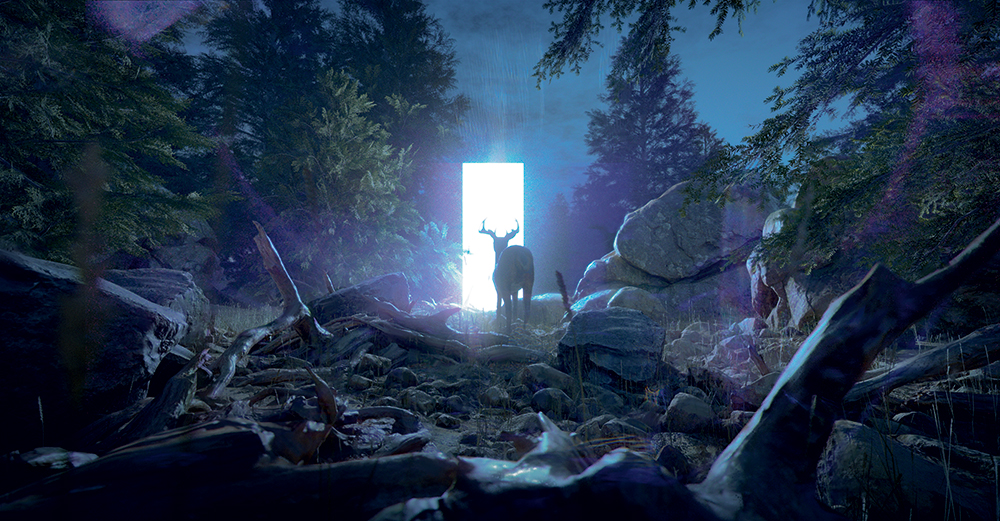
Jakub Javora's surreal Dark Forest scene, with its glowing doorway contrasting with the natural scene, perfectly sums up the creative person's eclectic and eccentric interests. "I'g mostly inspired by weird phenomena like chaos theory, sexual selection and various religious practices," he explains.
Unusually for Javora, this scene was a pure 3D limerick with no 2D techniques involved. "Some people are using the same tools and workflow without changing," he says. "I am ever trying to do something extra to keep my creative spirit going and savor the piece of work."
Side by side page: More bully 3D art projects
Related articles
Source: https://www.creativebloq.com/3d/inspiring-examples-3d-art-12121523
0 Response to "What Style of Art Is Use of Materials 3d"
Post a Comment